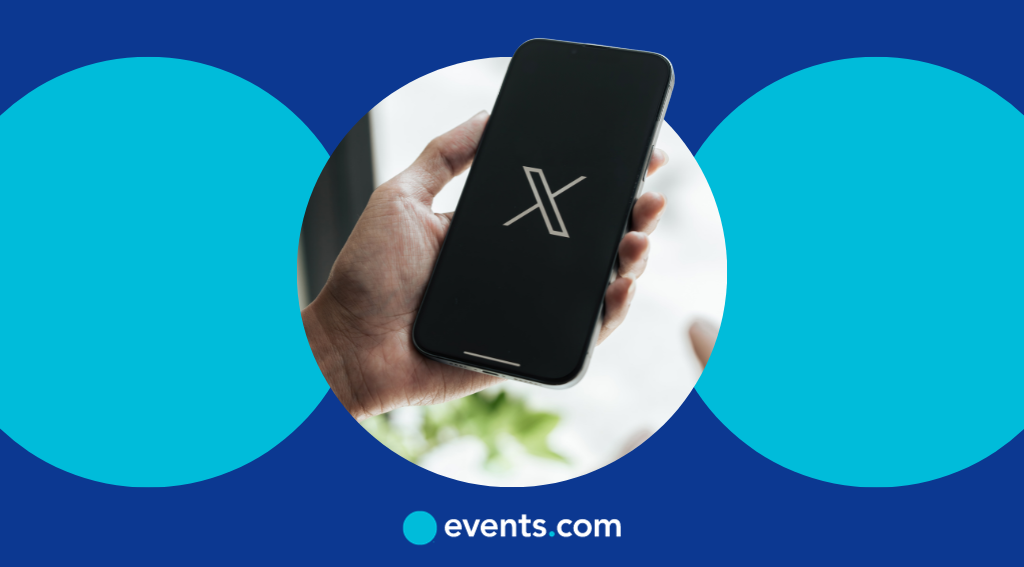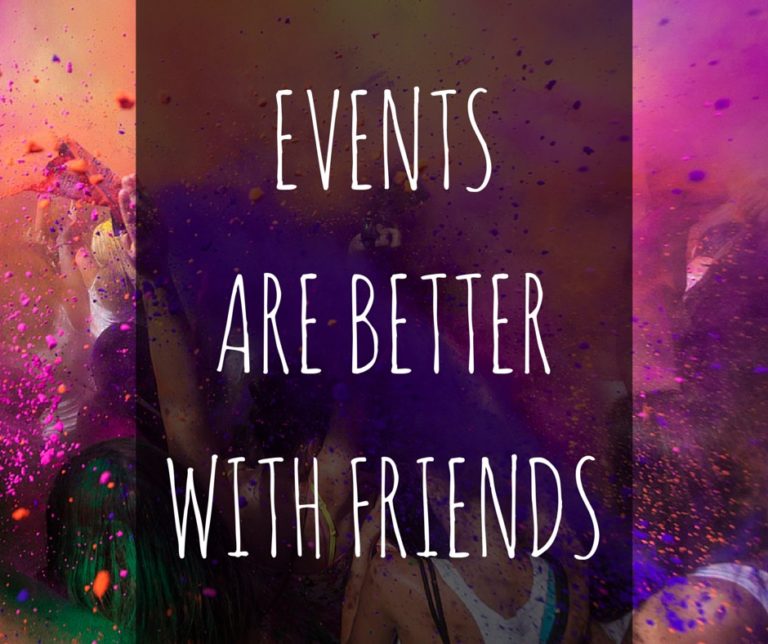Twitter’s rebrand came out of left field with a cryptic message from Elon Musk, owner of X Corp, shared via the Twitter website: “And soon we shall bid adieu to the Twitter brand and, gradually, all the birds.”
Since then, X has replaced the iconic bird icon with a single letter and repurposed Twitter to be something else entirely. But the Twitter rebrand wasn’t the success Musk hoped it would be. Instead, critics dubbed the rebranding a failure, with more than 70% taking to the Apple app store to voice their dissatisfaction. Additionally, Fortune magazine estimates the rebrand has cost Twitter at least $4 billion in brand value, with some estimates reaching as high as $20 billion.
So, why did the Twitter rebrand fail, and what can event planners and other decision-makers learn from Elon Musk’s unsuccessful rebranding attempt?
What the Social Media Giant Did Wrong in Its Latest Rebrand
Since taking complete ownership of Twitter on October 27th, 2022, the social media app and Elon Musk faced many difficulties. A series of sudden changes to the user interface, an unclear policy shift that forced some users to subscribe to Twitter Blue, and the firing of long-time employees caused the social media giant to lose the trust of many active users.
Rebranding Twitter as X and replacing the blue bird image, the mascot of Twitter since 2012, turned out to be a disadvantage. The familiar bird icon was literally everywhere, on every webpage. Without advance warning, Musk made the bird obsolete, and users struggled to adapt to the new visual of a single “X.”
For event planners and marketers, Twitter’s rebranding failures serve as a cautionary tale. Keep in mind what went wrong with Twitter’s rebranding journey, and compare it to successful rebrands to learn how to brand and market your event successfully.
4 Examples of Successful Rebrands To Learn From
Not all rebrands fail. Here are four examples of successful rebrands and what you can learn from them for your next creative event branding strategy.
1. Dunkin’: Stay True to Your Heritage
Dunkin’, formerly known as Dunkin’ Donuts, is one of America’s most prominent coffee- and donut-focused restaurants. Founded in 1950, Dunkin’ has more than 13,200 restaurants globally.
In 2018, Dunkin’ Donuts rebranded itself and, unlike Twitter, did so successfully. The donut-producing giant shortened its name to Dunkin’ and modernized its font and stores.
Dunkin’ held onto its playful color scheme and its commitment to brewing exceptional coffee and baking scrumptious donuts. Dunkin’s rebrand was about growing in modern times and keeping up with a new generation of coffee and donut lovers. They relied on market research to guide their decision and announced their changes well in advance of the shift to give loyal customers time to adjust.
Dunkin’s rebrand shows that it’s important to study the market and be transparent with clients in the face of change.
2. LEGO: Invest in What Works
It’s hard to imagine a world where LEGO wasn’t a successful toy manufacturer. However, in the early 2000s, LEGO suffered a drastic profit loss and was $800 million in debt. After all, competition was fierce for LEGO — too many other toys were on the market, and the digital era was stealing kid’s attention. The significant loss of profit nearly caused them to go bankrupt.
To combat this, the company made some efforts to consolidate holdings but also doubled down on its brand identity. LEGO leaders embraced the idea that people associated the brand name with “pricey toys” because it meant the LEGO name held its value. They treated their offerings like high-quality, high-value products, especially new intellectual properties like Nintendo, Star Wars, and Harry Potter. The public responded to this confidence by paying the set price and collecting these “limited offer” sets, boosting sales.
LEGO also released a LEGO-themed movie that helped fuel the company’s popularity and brand recognition. LEGO’s successful boost was more than just thanks to collaborating with big names and their movie release. They also asked for feedback from fans and doubled down on their core philosophy of good-quality play. By staying true to their brand identity, the executives at LEGO demonstrated confidence in their core offering, and the public followed suit, making them a nearly $4 billion-a-year industry.
3. Meta: Embrace Innovation
Facebook has long been a frontrunner in social media platforms, but interest seems to be waning with newer generations. Younger people prefer shorter content and unlimited interactivity associated with social media apps like TikTok, Snapchat, and Instagram.
Zuckerberg, the founder of Facebook, worked to create a virtual world that would appeal to all generations. With the rise of virtual reality systems, who can blame him?
Zuckerberg’s virtual world, or metaverse, allows users to use artificial intelligence (AI) and VR technology to spend time in a virtual world. Zuckerberg coined the term Meta to encompass not only his virtual world but also his platforms, such as Facebook, Instagram, and WhatsApp. And while he has decided to rename and rebrand the company of Facebook under the Meta name, individual platform names will remain.
The rebrand is a chance for Facebook to remain relevant and embrace innovation. As Zuckerberg prepares the metaverse to become the future of the internet, he’s choosing to rebrand the company to represent the forward-facing innovation it embraces.
4. Starbucks: Refocus on What Matters
With a global customer base, Starbucks is a popular destination for coffee lovers who appreciate the coffee giant’s cozy ambiance and commitment to sustainability. Starbucks arrived on the scene in 1971 and was a success among customers.
But in the early 2000s, Starbucks tried to be something it wasn’t — an entertainment brand. Distracted from its core offerings of coffee, Starbucks found itself losing customers, taking a hit in stock price, and facing employee layoffs and store closures. The company soon realized its errors and decided to refocus before it was too late.
Enter the rebranding of Starbucks. The company decided to return to its roots of marketing cold and hot caffeinated beverages. Their logo change, which dropped the words “Starbucks” and “Coffee,” signified their shift in values and direction. Even though their original design of a white siren on a green background remained, the cleaner lines allowed them to keep up with the growing trend of minimalism in event branding design while conveying to their audience that they were more than a coffee brand.
Though the rebrand wasn’t initially met with open arms, the process was deliberate and thoughtful, which eventually translated to a successful, recognizable rebrand.
What You Should Take Into Consideration for Your Event Branding
Here are a few considerations to keep in mind for your next branding endeavor.
Event Brand Identity
Your brand’s identity is the most important part of your event. They’re essential in clarifying an event’s purpose, values, and unique selling points. Use your brand identity to tell a story and create hype for your event. Define who you are, what you stand for, and what makes attendees interested.
Take a look at Meta’s brand identity. It embraced innovation and the future of the internet through its metaverse concept, setting a clear narrative for its audience about the company’s direction and vision.
Event Brand Assets
Event brand assets are the elements that represent your event or brand. These include logos, color schemes, typography, and any visual or auditory elements that make up your brand’s image. It could even be a physical element like LEGO’s building blocks.
Brand assets play a crucial role in conveying your event’s identity. Like Starbucks did with their redesigned logo or LEGO with their promise of good-quality play, you should keep them aligned with your brand message and values.
For instance, if you’re throwing a technology-based conference, think about incorporating a sleek and modern logo. Use color schemes that are vibrant and futuristic — think electric blues and neon greens.
Getting it right isn’t always easy. Collaborating with a professional branding agency can take your event’s visual elements to the next level and set you up with a cohesive brand image.
Event Touchpoints
Event touchpoints refer to attendees’ interactions with your event before they arrive at their final destination — your event. Touchpoints should reflect your event’s identity.
Some examples of touchpoints include personalized email invitations that reflect the event’s theme and values, event registration pages with user-friendly interfaces and consistent branding, and social media posts featuring engaging content that resonates with attendees.
Like Dunkin’ exhibited in their rebranding efforts, transparency and comprehensive communications are important with your customers or attendees. It helps build anticipation, trust, and excitement amongst participants. So, as you create your event’s touchpoints, think about ways you can communicate your values and motives with your clients.
Manage Innovative and Successful Events With Events.com
Manage innovative and successful events seamlessly with the help of Events.com. Our event management software provides you with the tools and solutions needed to create memorable experiences for your attendees. From registration processes to event activation, branding ideas for events, and logistics, Events.com is your trusted partner in event success and elevating your advertising revenue. Contact us today and discover how we can help you plan a successful event.






